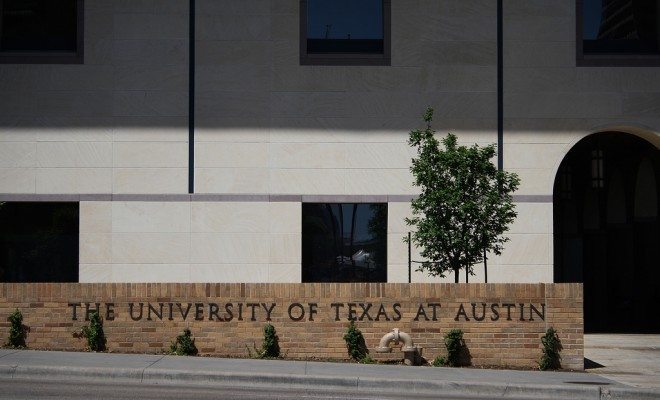 Image courtesy of [Derek Key via Flickr]
Image courtesy of [Derek Key via Flickr]
Law
Affirmative Action Makes its Way Back to the Supreme Court
As racial tensions become more visible in the United States, particularly at American universities, the Supreme Court finds itself hearing oral arguments on a major affirmative action case. While legal underpinning for affirmative action has been weakening in recent court decisions, the plaintiffs in this lawsuit seek to end the practice altogether.
The lawsuit, Fisher v. University of Texas, was brought by Abigail Fisher after she was denied acceptance to the University of Texas’ flagship school at Austin. Fisher alleges that while she was not accepted other, less-qualified students were admitted to the school because of their race. UT-Austin has a relatively unique admissions process because the school automatically accepts all students from Texas in the top 10 percent of their high school class. In practice, the actual percentage has been slightly lower since a law modified the rule in 2009, which said that UT-Austin must be able to fill 75 percent of the available residences with students from the top of their high school class. Importantly, though, Fisher was not granted automatic admission and was then forced to be considered using the university’s holistic evaluation process, in which race is considered alongside a wide range of factors.
Interestingly, the university’s 10 percent policy has actually helped increase diversity at UT-Austin. The policy leverages the fact that Texas high schools are often racially homogenous in order to promote diversity. Because many of the state’s high schools are primarily black or primarily white, the top 10 percent admissions policy ends up increasing the number of minority students accepted to the school.
What’s particularly interesting about this case is that there is little evidence to suggest Fisher would have been accepted even if race wasn’t a factor. Instead, the case is more accurately a challenge to the use of race in admissions itself and not a challenge of the school’s particular decision in Fisher’s case. Pro Publica’s candid analysis of the case states the subject of the case pretty clearly: it’s about the conservative view that the Constitution is colorblind and no one should be treated differently based on their race. On the other hand, proponents of affirmative action argue that it is necessary to combat the legacy of racism and inequality in the United States, and by many measures those resulting racial disparities still exist today.
That underlying debate is at the heart of the discussion around the case, and it becomes particularly clear you look at the facts. When Fisher applied to UT-Austin in 2008, the 10 percent rule accounted for about 92 percent of all incoming students from Texas. Although she had good grades Fisher did not meet that qualification. Instead, she was evaluated using the university’s holistic review process using both an academic index (AI), which is based on test scores and grades, and a personal achievement index (PAI), which is based on two essays, the applicant’s life experiences, and, importantly, “special circumstances” that can range from economic background to race.
Based on the applicant pool, available evidence suggests that her rejection was not a result of her race. This fact is put clearly in the case’s court documents, in which UT-Austin notes,
Because petitioner [Fisher] was not in the top 10 percent of her high school class, her application was considered pursuant to the holistic review process described above… The summary judgment record is uncontradicted that—due to the stiff competition in 2008 and petitioner’s relatively low AI score—petitioner would not have been admitted to the Fall 2008 freshman class even if she had received ‘a “perfect” PAI score of 6.’
Put simply, regardless of Fisher’s score on the personal achievement index, her grades and test scores were too low to grant her admission–meaning that race had nothing to do with the school’s decision as the PAI wasn’t a factor. Fisher was also denied admission to the school’s summer program, but the evidence suggests that the same thing happened. For the summer program, there were better qualified black and white students who did not earn acceptance.
Rather than seeking to correct Fisher’s admissions decision, this case is, transparently, about eliminating affirmative action from the college admissions process. The group funding the lawsuit, the Project on Fair Representation, seeks to “support litigation that challenges racial and ethnic classifications and preferences in state and federal courts.” This ranges from ending affirmative action in admissions and employment to eliminating voting protections for minorities. And so far, the group has had some notable success achieving that goal. In fact, it was the force behind the Shelby County court case that invalidated a major part of the civil rights act a couple years ago.
In the last landmark ruling on affirmative action, Justice Sandra Day O’Connor wrote the majority opinion that allowed schools to use race as a factor for admissions in order to achieve diversity but gave a sort of expiration date on the practice. According to the decision, affirmative action could be used if it was narrowly tailored to promote greater diversity among the student body. In the opinion, she said, “the court expects that 25 years from now, the use of racial preferences will no longer be necessary to further the interest approved today.” That was 2003, but 12 years later a renewed push to end affirmative action may move that deadline up considerably.
The Supreme Court is now tasked with determining whether affirmative action remains acceptable or if it should be further restricted and possibly eliminated altogether. Notably, Justice Elena Kagan recused herself from the case because the Justice Department filed a brief on it during her time as Solicitor General. There is a possibility that the Justices split the decision 4-4, in which case the lower court’s ruling in support of the admissions program will hold.
It’s pretty clear that the Justices are not eager to hand down a landmark decision on affirmative action. In fact, they have already heard this case once before but remanded it back to the lower court to evaluate UT-Austin’s use of affirmative action with stricter scrutiny. In oral arguments earlier this week, some of the Justices wanted to stall even further, questioning whether sending it back for a trial could be beneficial. Now that race is at the forefront of political discussion, the court is in a particularly tricky position. The fate of affirmative action programs now hangs in the balance.








Comments